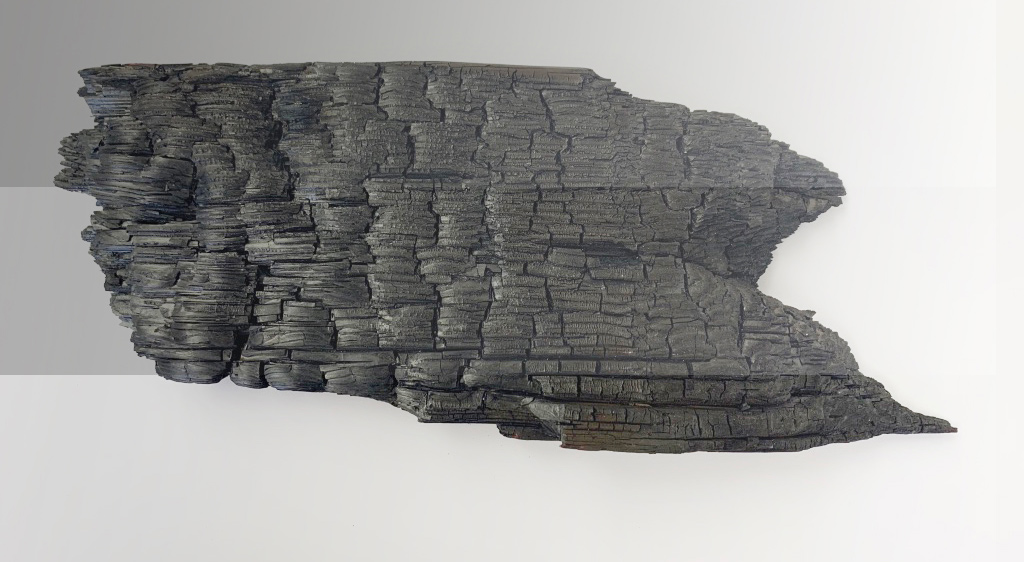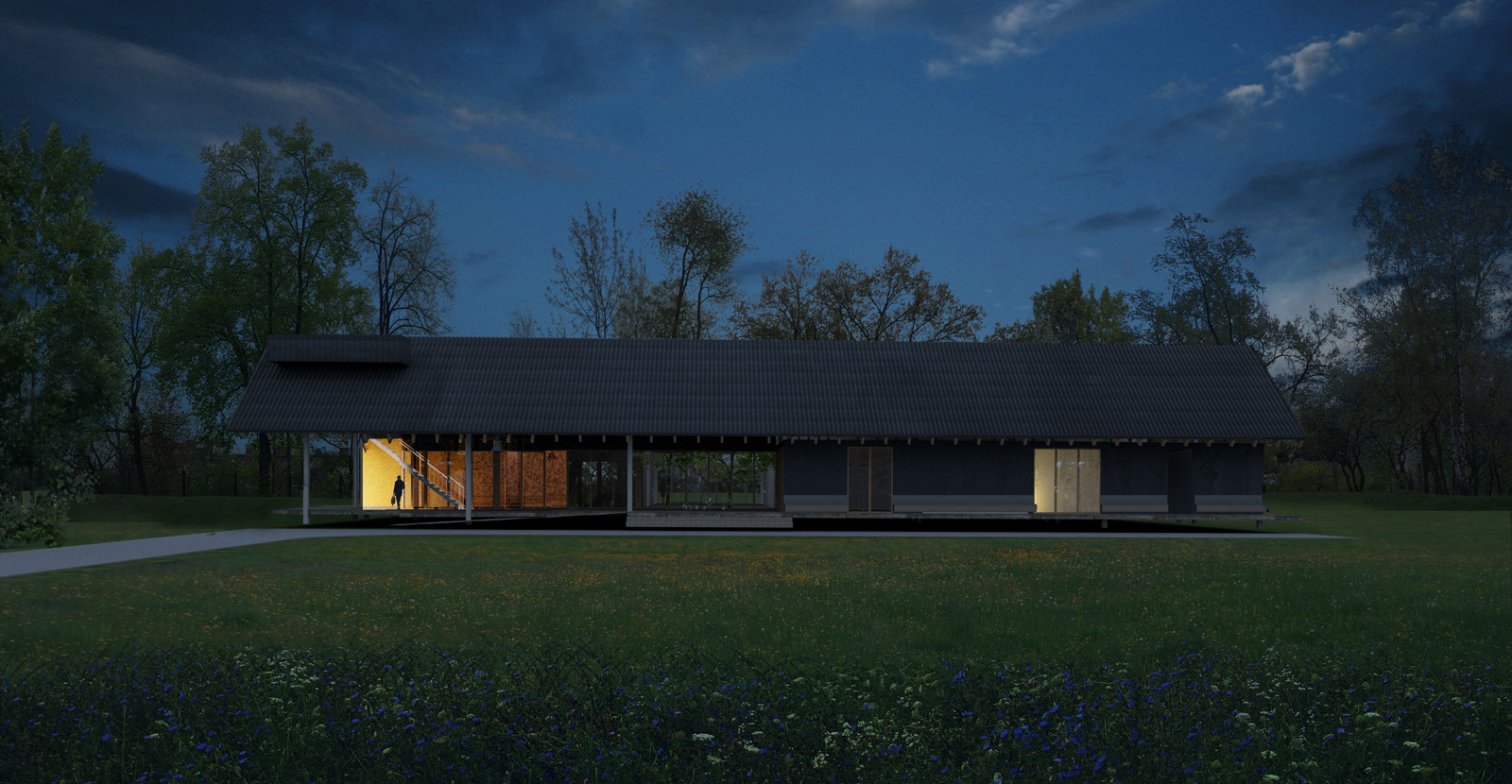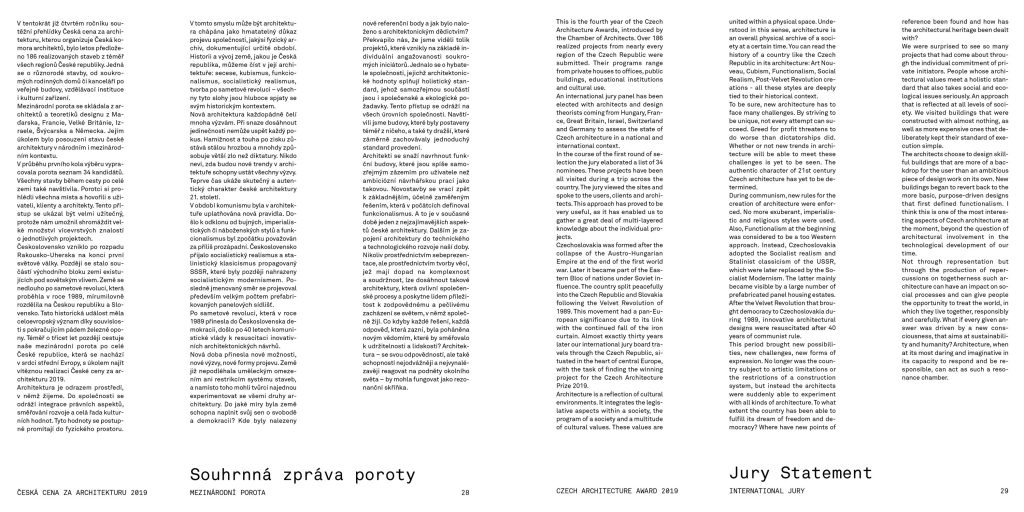Youth Center St. Benedikt, Nütschau Monastery – Concept Design Phase
A place for connection and exchange
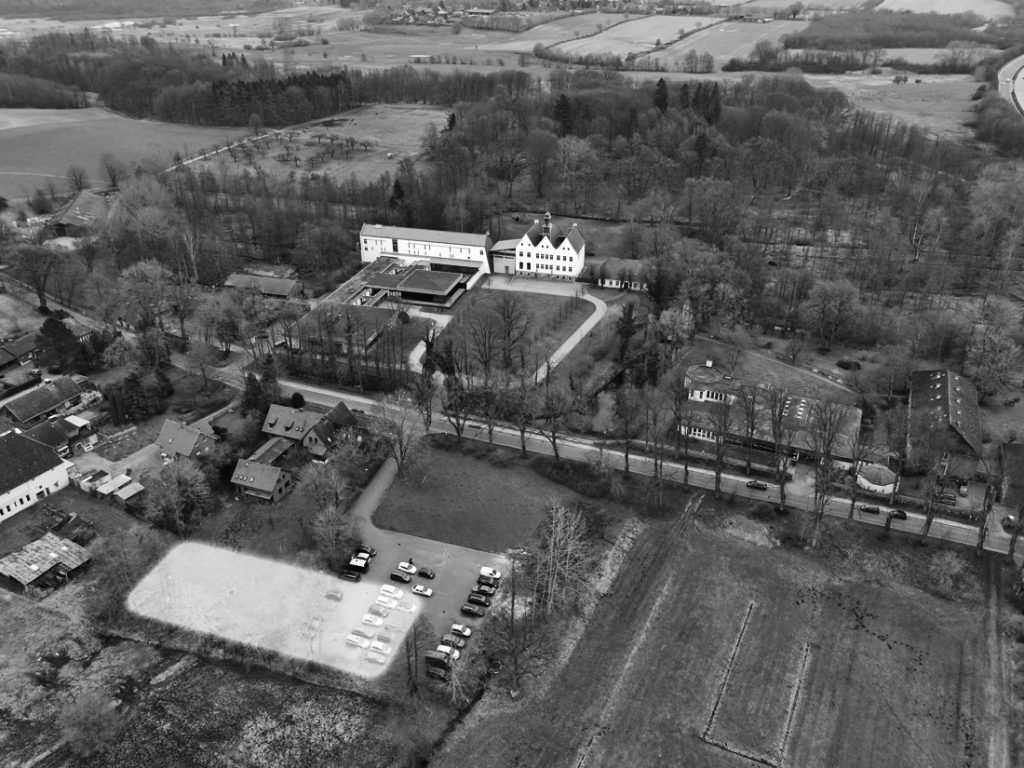
Monastic Complex, in the foreground the site for the new Youth Center St. Benedikt at Nütschau Monastery
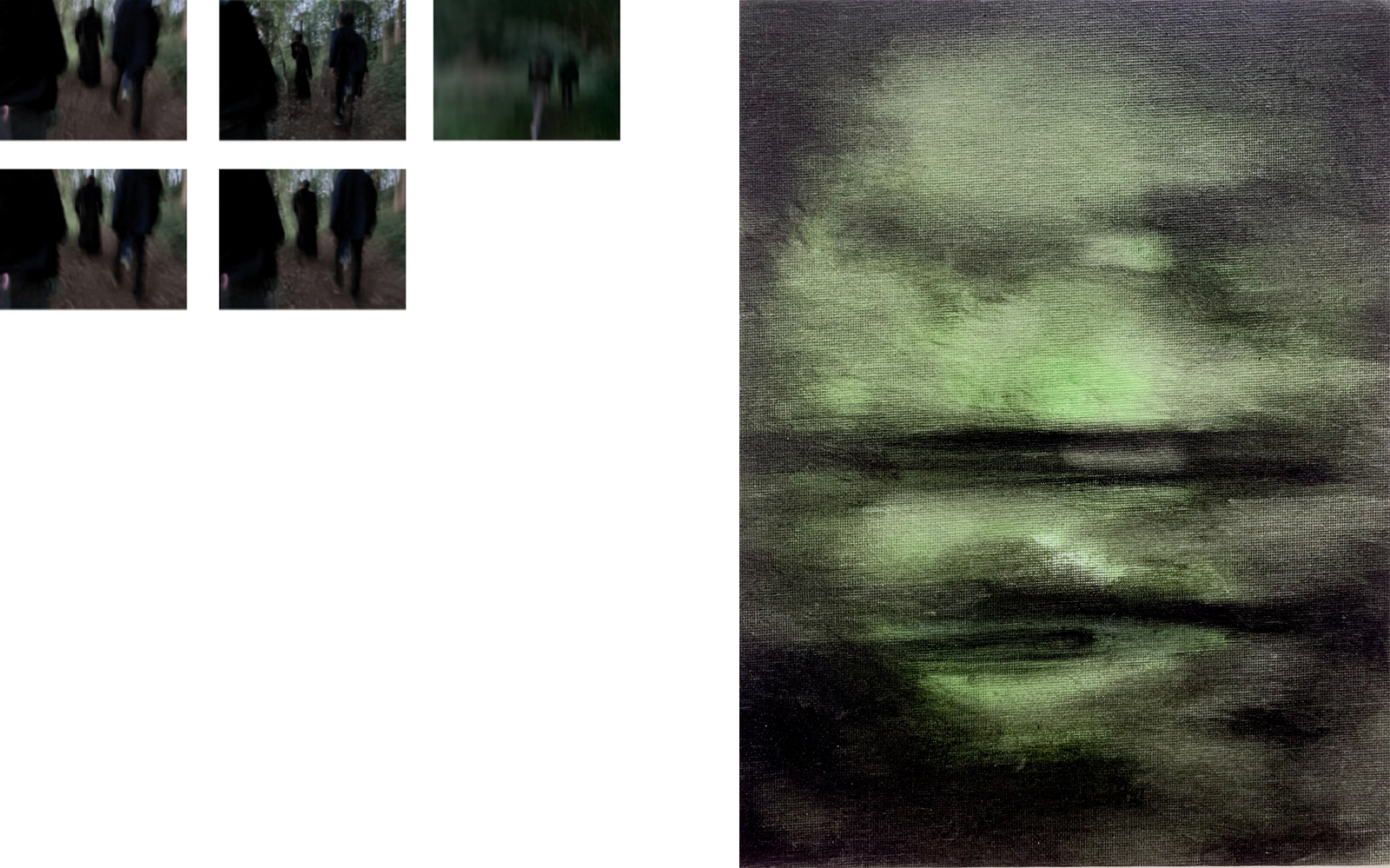
l: Space Group, Monk and More I–VI, photography, 59 x 84 cm, 2021, Imke Woelk
r: Moor backdrop, oil on canvas, 30 x 24 cm, 2022, Imke Woelk
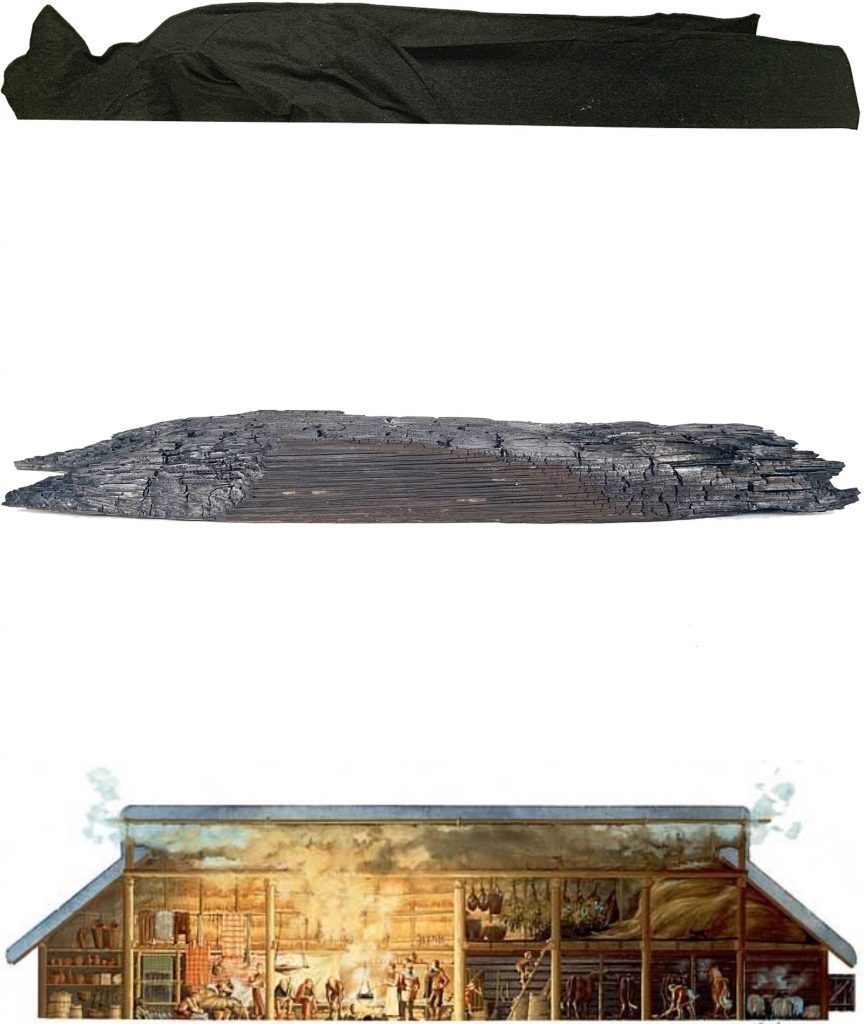
Formal and conceptual reference points: reclining monk’s habit – charred wood – longhouse type
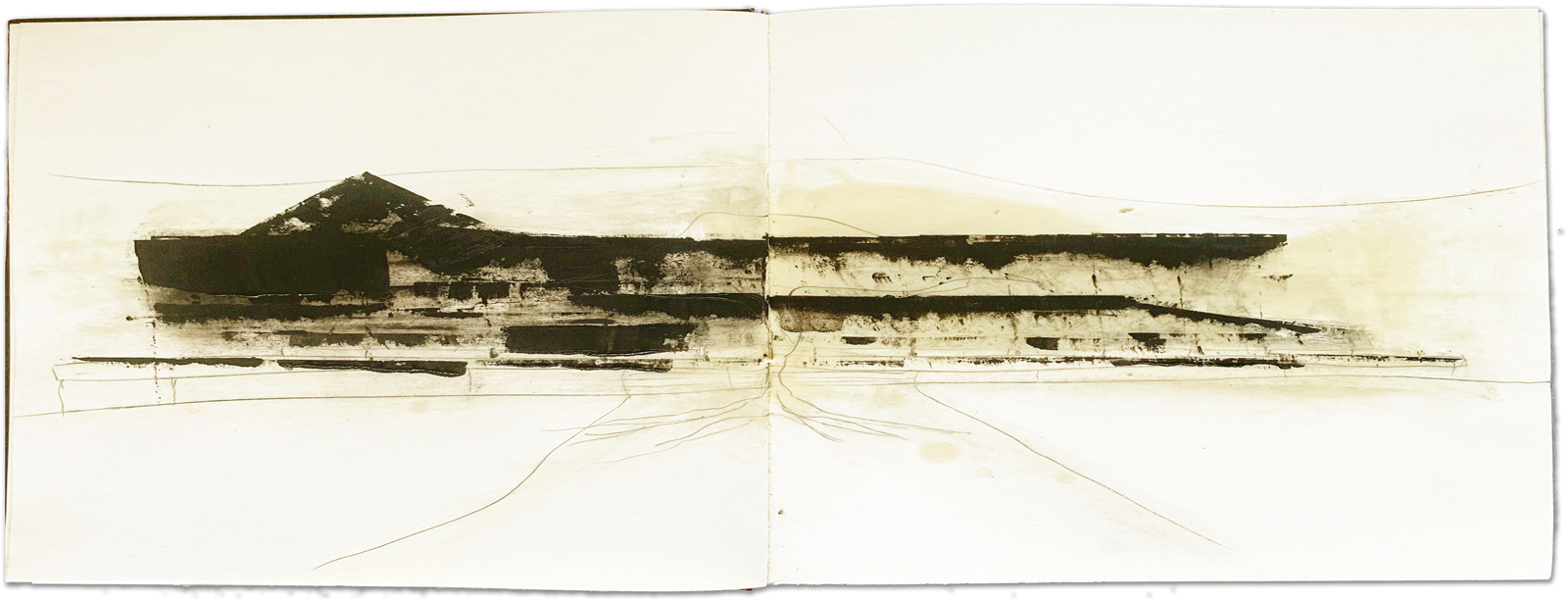
Ark, graphite and oil on paper, 42 x 58 cm, 2021, Imke Woelk
Spatial Concept: Platform with three longhouses and variants of temporary configurations
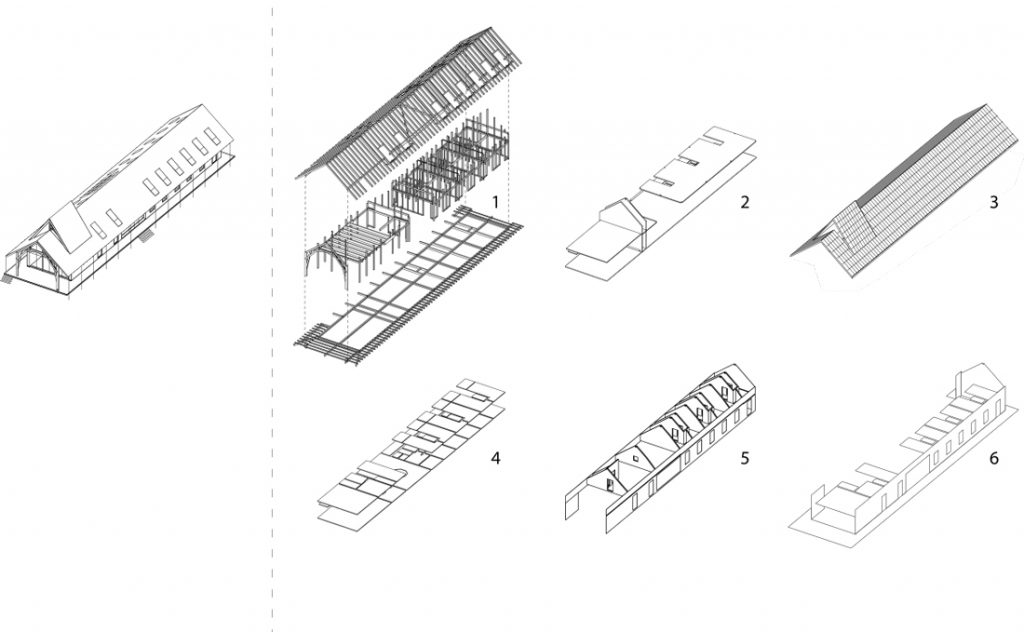
1. Timber frame construction: components reusable
2. Cross-laminated timber ceilings and walls, solid: reuse and wood recycling
3. Fully integrated photovoltaic roof covering for self-sufficient power supply
4. Mastic asphalt screed: recycled material
5. Engineered wood panels: OSB (structural) and plywood (interior finishing): reuse and wood recycling
6. Timber cladding and solid wood flooring: reusable
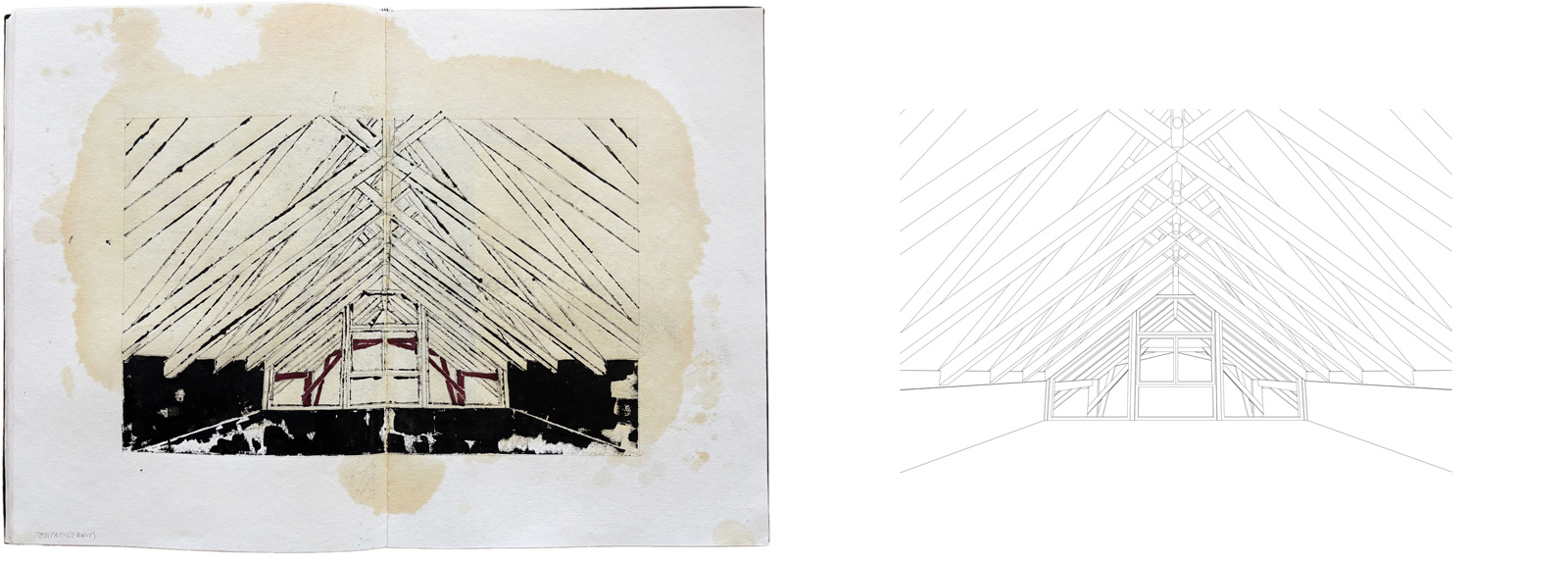
Silent room (meditation)
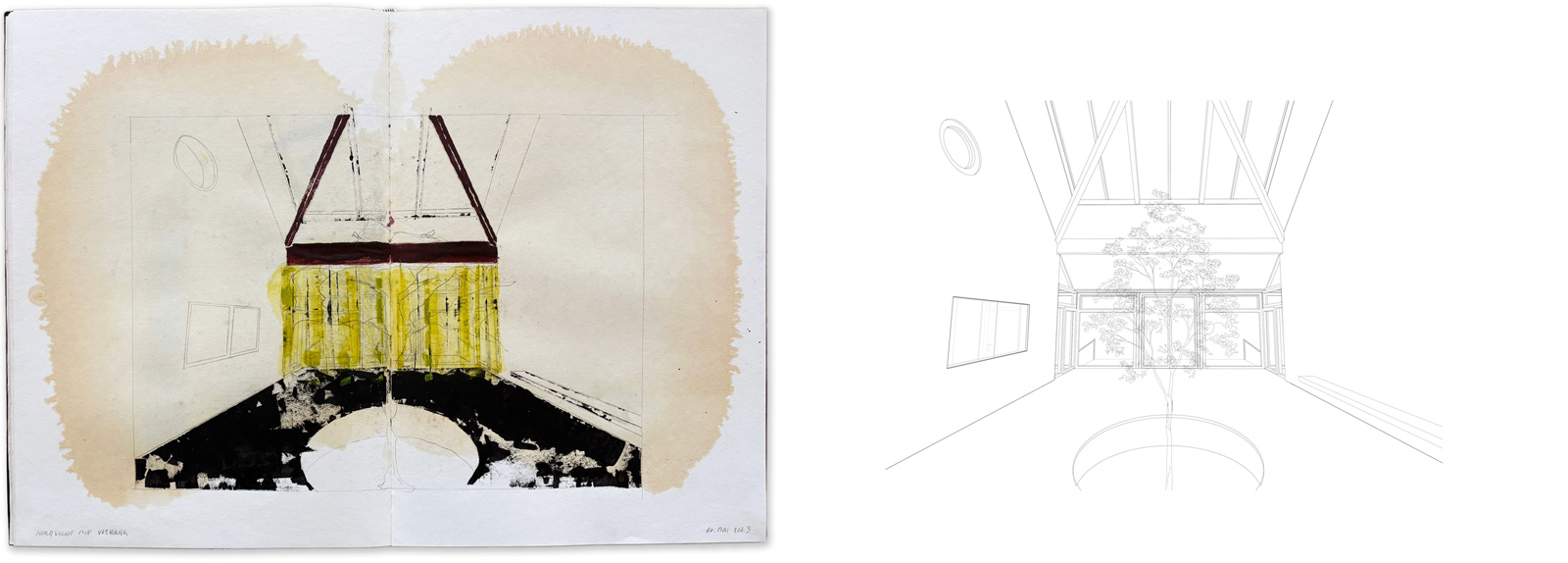
Paradise: central reception and common room
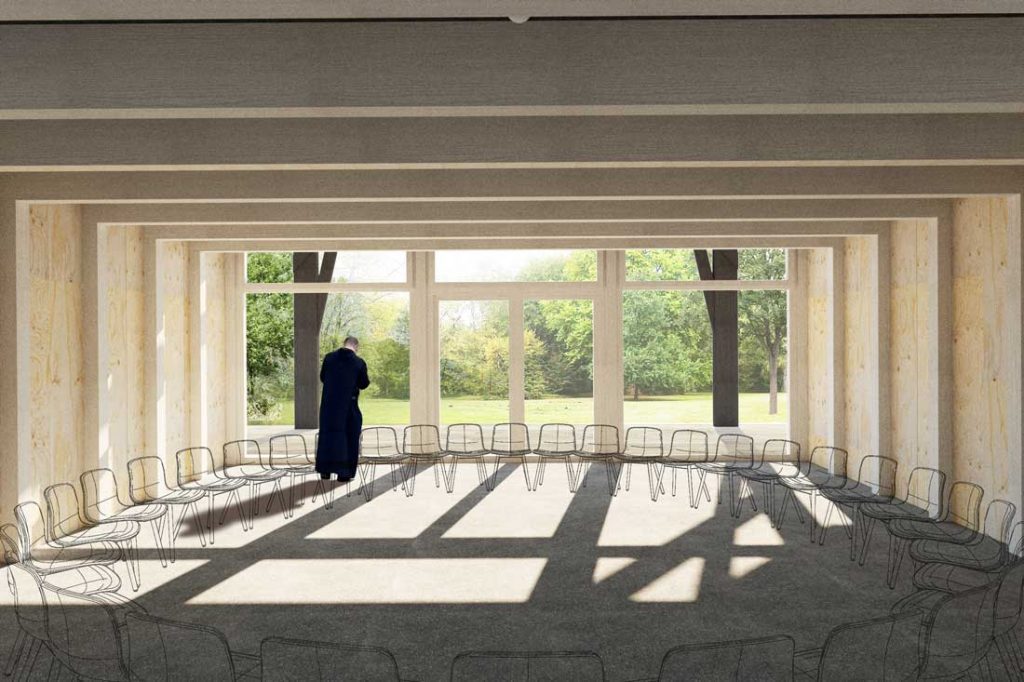
Plenum room
Construction processRealisation
Similar-projects:
Cavalier House Meinbrexen
Residential House Berlin-Frohnau
| Programme | Youth guesthouse with overnight accommodations for 40 people (10 guest rooms with bathrooms), event area for 50 people (plenum hall and meditation room), as well as central reception area with kitchen and dining room |
| Status | realisation |
| Location | Nüstschau Monastery, Travenbrück, Germany |
| Client | Benediktinerpriorat St. Ansgar, Kloster Nütschau |
| Team | IMKEWOELK + partners, structural engineering and building physics: ZRS, Berlin |
| Area | GFA: 680 m2, NUA: 534 m2, GCV: 2.351 m3 |
| Construction | Prefabricated timber skeleton structure |
| Services | Program and site analysis, strategic development, artistic concept, technical concept, visualization, design planning, permit planning, execution planning, tendering and awarding |
| Sustainability | Use of materials with high reusability and recyclability, as well as a low CO₂ footprint. Air-source heat pump and full-surface photovoltaic roof for electricity generation, natural ventilation concept, integration of CO₂-binding green structures in the outdoor areas, minimized access infrastructure, and preservation of the existing building. |
| Date | 2025 |

